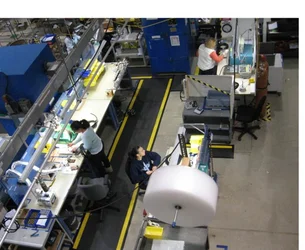Lean production is one of the most important manufacturing strategies to emerge in the last century. By minimizing waste, which is considered anything that doesn’t provide value in the manufacturing process, lean improves efficiency without sacrificing productivity, enabling you to deliver higher quality products to your customers at lower costs.
A perceived issue with lean is that it’s typically thought to work best in high-volume, low-mix settings. And while it’s true that lean does have its roots in these kinds of operations, the idea that it can’t be applied to other types of processes is a misconception. With the right strategy and planning, lean can be used in other manufacturing environments, including job shops that have a high-mix of products at relatively lower volumes.
Since 2008, we’ve applied lean to our manufacturing operation. It’s now a pervasive force in improving the efficiency of our factory and provides our customers with several benefits, including:
- Speed to market. Using Standardized Work Instructions (SWI), we can design and deploy manufacturing cells for individual products within a few days of receiving a customer order. As a result of our faster manufacturing process, our customers get to market more quickly.
- Manufacturing at scale. Lean makes it cost-efficient to produce goods at relatively low volumes. As products scale to higher volumes, we can seamlessly scale the size of our manufacturing lines. Moving from product prototype to low-volume production to high-volume production becomes a cost-efficient and friction-free process.
- Higher product quality and yields. Thanks to single-piece flow, quality issues that arise on the production line are no longer hidden: once a problem is identified, steps are taken to strengthen the process and prevent the mishap from occurring again. As a result, higher quality products can be manufactured in higher quantities and at faster speeds—while at the same time, reducing rework costs.
To learn more about how we implemented lean in our job shop, download our latest white paper.


